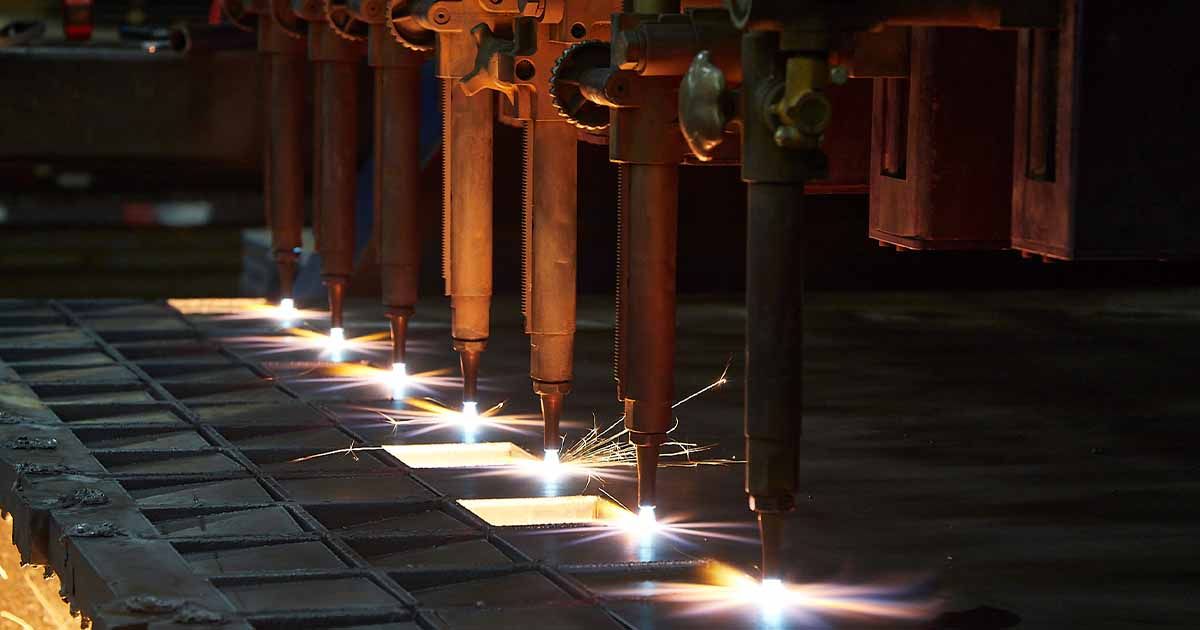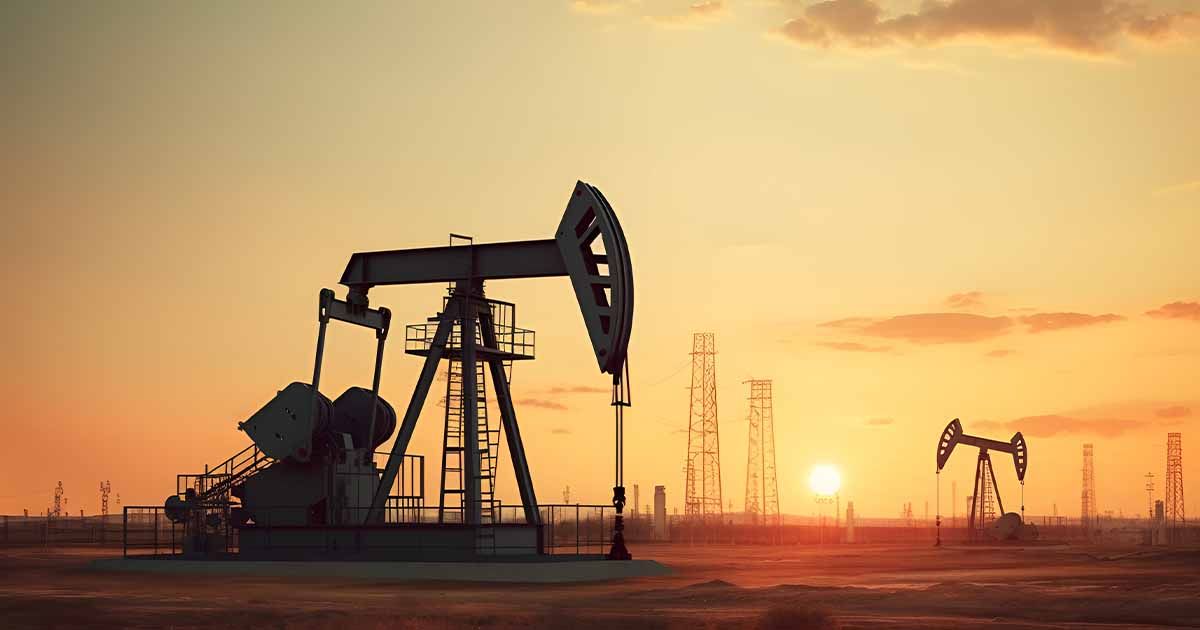
We collect basic website visitor information on this website and store it in cookies. We also utilize Google Analytics to track page view information to assist us in improving our website.

Flame cutting, also known as oxy-fuel cutting, is a tried-and-true method in industrial metalworking. It is particularly valued in the oil and gas industry because of its ability to cut thick steel and heavy structural elements.
Out where oil and gas teams work, often under intense pressure and in tough conditions, flame cutting proves its worth time and again. Its simplicity is exactly what makes flame cutting a go-to method in industries where time is money, and adaptability is key.
In this blog post, we will take a deeper look at the diverse applications of flame cutting within the industry, understanding its role in creating infrastructure, maintaining operational integrity, and forging the heavy-duty components that underpin this vital sector of the global economy.
At Amber Steel, we specialize in laser, plasma and flame cutting, and have always been a "total source" service for the production of quality steel products. Quality is achieved by utilizing the right production technique for the right product. Our continual investment in equipment and technology enables us to offer clients many production alternatives to achieve exact product specifications and tolerances.
If you’re interested in learning more about steel cutting or have a project in mind that you would need our expertise on, do not hesitate to reach out. We’re always one email or phone call away.
Tough, high-tensile steel plates and structures are essential in the oil and gas sector, where harsh environments and extreme pressure are a given.
Flame cutting, or oxy-fuel cutting, combines the power of oxygen and fuel gasses to cut through these thick, high-tensile metal components with precision.
It all starts with a torch heating the metal to the point it's ready to ignite. Then, a focused stream of oxygen hits the metal, sparking a reaction that neatly splits it along a pre-set path.
What sets flame cutting apart is how well it adapts to making big, varying components that the oil and gas industry often needs. Flame cutting might not match the fine precision of plasma or laser cutting, but when it comes to initial part production — where speed and cut depth take precedence over a perfect surface — flame cutting stands out. Its efficacy, affordability, and ability to scale up make it an necessary method for projects where functionality trumps fineness.
Flame cutting's value shines in numerous applications within the oil and gas industry, where expertise in materials and strict adherence to safety and environmental protocols are critical.

The backbone of the oil and gas industry is its infrastructure, from the massive drilling rigs to the sprawling network of pipelines. Flame cutting is key in creating the steel frameworks for rigs designed to endure incredible stresses. It's also known for cutting pipeline sections to precise lengths and preparing edges for welding, which is essential for the miles-long stretches that form the industry’s veins.
Additionally, when infrastructure needs repair, flame cutting provides the accuracy needed to remove old or damaged sections quickly and cleanly.
Offshore platforms and onshore processing plants are built to last against harsh elements, and flame cutting is foundational to their construction. It's particularly effective for onsite modifications of large steel beams and plates, ensuring that the final structures meet exacting standards, despite the challenges posed by different locations.
For storage and pressure vessels, which are often made from thick steel plates chosen for durability, flame cutting is a go-to process. It's used to precisely shape internal components, ensuring they fit snugly within the complex contours of tanks and vessels.
The industry frequently needs custom steel parts — from straightforward supports to intricate machinery components. When these parts are too hefty for finer cutting techniques, flame cutting steps in with its quick, cost-effective approach. It delivers tailor-made pieces that satisfy the sector's stringent standards.
Flame cutting holds its ground with significant advantages in the oil and gas industry, especially when stacked up against other metal cutting techniques:
Handling Thickness: When it comes to cutting through very thick steel plates, flame cutting is the champion. Plasma and laser cutters have their limits, but flame cutting powers through the heavy-duty materials used for drilling rigs and industrial machinery with ease.
Cost-Effectiveness: On the financial side, flame cutting is a winner for large-scale parts. It involves less complex machinery and fewer consumables than other methods, making it a smart pick for any operation looking to keep a lid on production expenses.
Flexibility and Growth Potential: The equipment used for flame cutting can be easily adjusted and expanded to accommodate custom jobs of all shapes and sizes, a necessity in oil and gas projects with their varied material requirements.
Though it may lag behind the pinpoint precision of plasma or laser options, flame cutting's strength lies in managing thick materials and offering cost savings on large components. Its no-nonsense, efficient process is a cornerstone in the early phases of construction where the main objectives are material penetration and quick progress.Our Flame Cutting Expertise
At Amber Steel, we’re in the business of exceptional steel cutting, with an eye for precision that defines our work in the oil and gas sector. Our expertise spans laser, plasma, and flame cutting, and we're not just participants in the industry standards—we're the trailblazers.
Our Talented Team: The secret behind our exceptional services is our people. More than operators, we are experts at what we do, continuously trained in the cutting-edge of steel cutting technology.
Advanced Process Control: At Amber Steel, precision is the standard. Our innovative control systems manage every detail of the flame cutting process to deliver exactly what you need. From precise gas flows and nozzle choices to cutting speeds, precision is what we deliver every single day.
Cutting-Edge Technology: Our equipment is as agile and forward-thinking as the sectors we cater to. With continuous investments in the latest tech, we ensure our machines are as reliable as they are precise, offering a suite of production options to meet the exacting needs of your projects.
Safety First: Safety isn’t just a policy; it's embedded in our culture. Our strict safety standards are designed to keep our staff safe and your projects on schedule. We believe a secure workplace is a productive one, and we stand by that with a goal of zero incidents.
Amber Steel is not just keeping pace with the future; we are actively forging it. Our dedication to technological advancement is setting new standards for precision and productivity.
CNC Precision: With computer numerical control (CNC) technology, we've enhanced our capability for precise cuts, melding traditional skills with modern accuracy. At Amber Steel, we believe in blending time-honored methods with cutting-edge precision.
Hybrid Cutting Techniques: Our specialization doesn't end with a single method. By integrating the strengths of laser, plasma, and flame cutting, we deliver hybrid approaches that strike the perfect balance between cost and precision.
Partnership and Expertise: We at Amber Steel are more than just service providers; we are your consultative partners. Our team is just an email or a phone call away, ready to bring their expertise to the table for your specific needs.